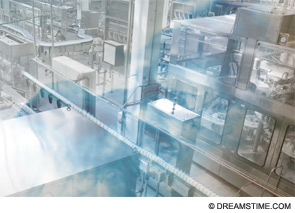In addition to the recalled product values, the direct hit to a facility will include, on average, a full quarter of profits for the recalled product, marketing to repair long-term brand damage, spillover negativity that reduces sales of other products, product liability claims, and the cost of restoring status within distribution channels.6

CD to the Rescue
Knowing the effect a food recall could have, many facilities have been increasing their sampling tactics to better detect contamination occurrences. Once contamination is detected, however, actions must be taken and might include a product recall. Because of the potentially catastrophic consequences, many facilities are improving their contamination prevention activities.
More washdowns and surface cleanings can help, but only a gaseous decontamination can really get into all the tight locations in a facility such as an egg-processing plant, meat-packing plant, or produce-handling facility, allowing for a complete kill of any contaminating pathogens. All decontamination methods function efficiently because of three important steps:
- Complete distribution;
- Thorough penetration, and;
- Sufficient contact time at a specified concentration with a sterilant.
The only two effective gaseous decontamination methods available are formaldehyde and chlorine dioxide (CD), but only CD is registered with the U.S. Environmental Protection Agency (EPA) as a sterilant process (EPA registration 80802-1). The formaldehyde process requires the heating of paraformaldehyde to release the gas, long contact times (usually six to 12 hours), and high concentrations to achieve a sporicidal outcome (10,000 ppm).
Gaseous CD has none of the drawbacks associated with the other decontamination methods. It can handle large areas and is compatible with the components, equipment, and finishings most commonly associated with food production facilities.
Also, formaldehyde is not capable of penetrating water to decontaminate either the water or the surface that any standing water may be in contact with. Furthermore, the residues left by formaldehyde, as well as its carcinogenic properties, make it an unattractive choice for areas where food is processed.
Vaporized hydrogen peroxide (VHP), applied as either a dry or wet process, is another fumigant commonly used for decontamination purposes. Like CD, VHP is registered with the EPA as a sterilant process—but only for small rooms and chambers. There are many issues involved with the VHP process within a facility. VHP is not a true gas at room temperature; therefore, it condenses as it cools, resulting in a temperature gradient. The point at which VHP is injected into an area is the hottest, and the vapor cools as it spreads farther away.
As VHP cools and condenses, it stops spreading and prevents full distribution throughout an area, altering the effectiveness of the decontamination process. Another problem with VHP is that the concentration increases from 35% to 78% as it condenses, resulting in a higher chance for corrosion and surface damage because of its oxidizing properties.7
CD and VHP are oxidizers, but CD is not as aggressive an oxidizer (oxidation potential data) as chlorine, ozone, peracetic acid, hydrogen peroxide, or bleach. Additionally, it is noncorrosive to common construction materials. In fact, VHP is 1.9 times more corrosive than chlorine dioxide, making it a potential health and cost risk for many of the materials in a production facility. VHP requires lengthier cycle times for the facility to be completely decontaminated and ready for use. Table 2 shows that chlorine dioxide gas is capable of decontaminating a much larger area in significantly less time.

ACCESS THE FULL VERSION OF THIS ARTICLE
To view this article and gain unlimited access to premium content on the FQ&S website, register for your FREE account. Build your profile and create a personalized experience today! Sign up is easy!
GET STARTED
Already have an account? LOGIN
